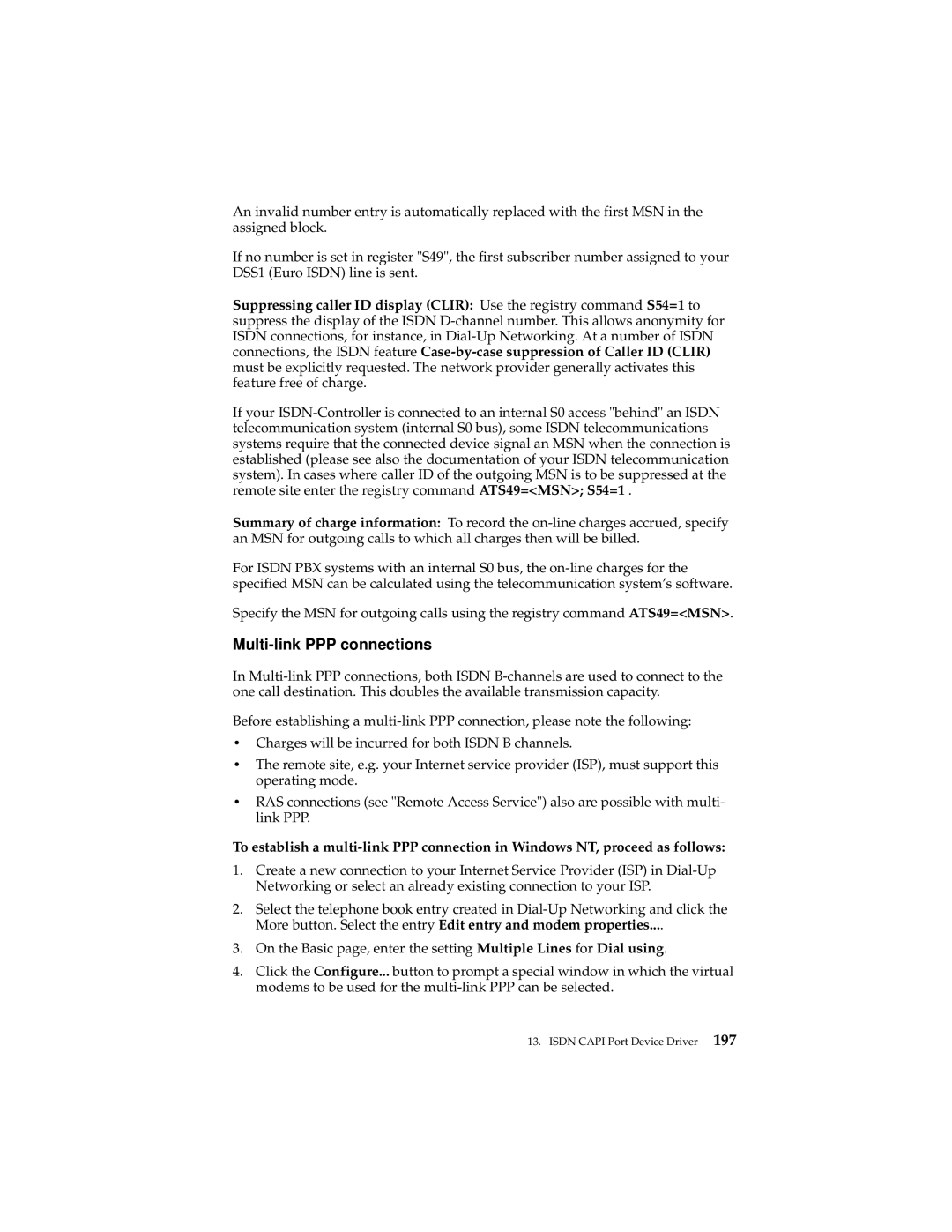An invalid number entry is automatically replaced with the first MSN in the assigned block.
If no number is set in register "S49", the first subscriber number assigned to your DSS1 (Euro ISDN) line is sent.
Suppressing caller ID display (CLIR): Use the registry command S54=1 to suppress the display of the ISDN D-channel number. This allows anonymity for ISDN connections, for instance, in Dial-Up Networking. At a number of ISDN connections, the ISDN feature Case-by-case suppression of Caller ID (CLIR) must be explicitly requested. The network provider generally activates this feature free of charge.
If your ISDN-Controller is connected to an internal S0 access "behind" an ISDN telecommunication system (internal S0 bus), some ISDN telecommunications systems require that the connected device signal an MSN when the connection is established (please see also the documentation of your ISDN telecommunication system). In cases where caller ID of the outgoing MSN is to be suppressed at the remote site enter the registry command ATS49=<MSN>; S54=1 .
Summary of charge information: To record the on-line charges accrued, specify an MSN for outgoing calls to which all charges then will be billed.
For ISDN PBX systems with an internal S0 bus, the on-line charges for the specified MSN can be calculated using the telecommunication system’s software.
Specify the MSN for outgoing calls using the registry command ATS49=<MSN>.
Multi-link PPP connections
In Multi-link PPP connections, both ISDN B-channels are used to connect to the one call destination. This doubles the available transmission capacity.
Before establishing a multi-link PPP connection, please note the following:
•Charges will be incurred for both ISDN B channels.
•The remote site, e.g. your Internet service provider (ISP), must support this operating mode.
•RAS connections (see "Remote Access Service") also are possible with multi- link PPP.
To establish a multi-link PPP connection in Windows NT, proceed as follows:
1.Create a new connection to your Internet Service Provider (ISP) in Dial-Up Networking or select an already existing connection to your ISP.
2.Select the telephone book entry created in Dial-Up Networking and click the More button. Select the entry Edit entry and modem properties....
3.On the Basic page, enter the setting Multiple Lines for Dial using.
4.Click the Configure... button to prompt a special window in which the virtual modems to be used for the multi-link PPP can be selected.
